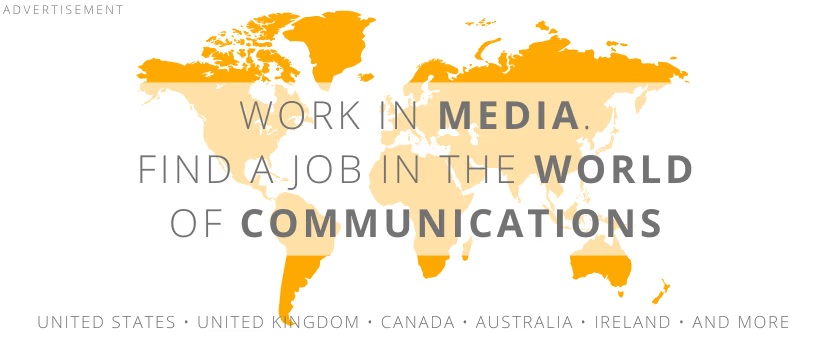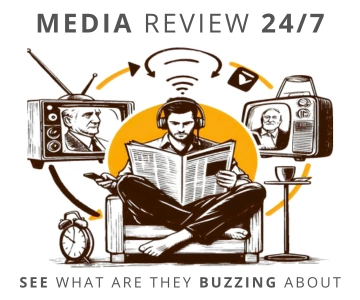Almost from the start, private stations funded by advertising dominated television in the United States. Offering free access to programs, they gradually took control of the audiovisual media market. By the 1950s, three commercial networks - NBC, CBS, and ABC - controlled 90% of the market. This situation continued until the early 1980s, when cable television appeared. Although it was paid and transmitted via satellite, it offered a much wider array of programming, from 24-hour movie channels to Ted Turner’s Cable News Network (CNN), and even continuous weather updates. Notably, MTV quickly captured the hearts of nearly all American youth. By 2000, cable subscriptions had spread to over 70% of U.S. households, while only 30% still preferred terrestrial networks.
Popular cable television, based on fiber-optic technology, was initially developed in 1948. Originally, it extended terrestrial station coverage to mountainous and remote areas that couldn’t receive standard broadcasts. Satellite transmission was officially approved by the FCC (Federal Communications Commission) in January 1973, marking the official start. New technology provided cable broadcasters with affordable and efficient methods to broadcast across wide areas.
A pioneer in this field was Home Box Office, a movie channel owned by Time Inc., which began distributing popular films via satellite in December 1975. This strategy also led to the success of Ted Turner, then owner of a local Atlanta station. His station became known as a "superstation" with interstate reach by reflecting signals off satellites to broadcast across the U.S. This same technology allowed him to launch CNN in 1980, the world’s first 24-hour news channel. By 1993, the power of cable television in the U.S. was undeniable, with MTV alone drawing 46 million daily viewers and operating 32 branches worldwide.
Cable’s success was also due to its ability to attract viewers with specific interests. Since the 1970s, new thematic programs gained popularity. Cable broadcasters introduced a program for the deaf (Silent Network, using sign language) and special educational broadcasts for high school students (Channel One, founded in 1988 by Christopher Whittle).
Advancements in technology, digital systems, and the expansion of the U.S. fiber-optic network are paving the way for new interactive solutions. Today, viewers can participate actively in shaping programs. Popular "Movies on Demand" services, for example, allow viewers to choose from thousands of films and watch them at a convenient time.
But the U.S. television market isn’t just about commercial and cable channels. Public broadcasters, though fewer in number, continue to serve the public. There are currently 349 independent public stations in the United States. These stations are affiliated with three central organizations. The Corporation for Public Broadcasting (CPB), created by Congress in 1967, manages federal funding for public stations and independent producers. The Public Broadcasting Service (PBS), established in 1969, handles program distribution and manages the satellite system that serves all public broadcasters. The National Association of Public Television Stations (NAPTS) assists public broadcasters in market research and strategic planning.
Evangelical clergy in the U.S. have also taken on a role similar to public television. Supported by voluntary donations from viewers or church members, they operate non-commercial evangelical stations.
Public television in the U.S. is partly funded by taxes paid by viewers. With 100 million people watching weekly, public television funding covers nearly three-quarters of its needs. The most popular public television program is "Sesame Street," which has drawn not only children learning to read and write but also adults fondly revisiting their favorite childhood characters.
The power of television is immeasurable. Today, 98.2% of U.S. households have at least one television, with an average of 2.4 TVs per household. Seven in ten Americans rely on television for information about the world. This influence is often used by different groups for various purposes, not always ideal. For years, there has been an ongoing debate in the U.S. about violence and sex on screen, the negative impact of certain programs on children and youth, and the climate of fear that consumption-driven society fosters. Television producers and large corporations benefit from this, while ordinary people bear the consequences.
Read all articles in the series The Fourth Estate in America.
COMMERCIAL BREAK
New articles in section History of the media
The History of The New York Times. All the news that's fit to print
Małgorzata Dwornik
In the heart of 19th-century New York, when news from across the world traveled via telegraph and the newspaper was the voice of public opinion, two ambitious journalists created a modest four-page daily that would eventually become a legend.
FORTUNE. The story of the most exclusive business magazine
Małgorzata Dwornik
Half of the pages in the pilot issue were left blank. Only one printing house in the country could meet the magazine’s quality standards. They coined the terms "business sociology" and "hedge fund". They created the world’s most prestigious company ranking. This is the story of Fortune.
History of Le Soir. A Belgian daily once free for ground floor readers
Małgorzata Dwornik
It started with an unusual sales policy and articles written personally by the king. This is where the comic hero Tintin made his name. The "fake edition" from the II World War went down in history. "Le Soir" more than once found itself targeted by authorities, censors, and even... terrorists and hackers.
See articles on a similar topic:
History of The Honolulu Advertiser. From missionaries to a merger with rival
Małgorzata Dwornik
It was created to outdo unreliable competition. Early world news arrived via boat. It didn’t hire Mark Twain, but Jack London wrote for it. The story of Hawaii’s oldest newspaper spans 154 years of ups, downs, and radical changes in direction. In 2010, to survive a losing war of attrition with its biggest rival, it had to merge with it.
History of television in Australia. It all began with a studio in a windmill
Małgorzata Dwornik
Already in 1885, thanks to Telephane, an invention by Henry Sutton, it was possible to watch horse races for the Melbourne Cup. The first real television broadcasts, conducted from 1934 at the old windmill on Wickham Terrace in Brisbane, were watched by only 18 television owners, but by the following year, test transmissions had begun in other major cities.
The History of Title Case. Where Did Capitalized Titles Come From?
Krzysztof Fiedorek
Title Case, a style where most words in titles begin with a capital letter, has shaped the look of English publications for centuries. Its roots trace back to the 18th century when the rise of the printing press influenced how information was presented.
Granma. History of the most communist newspaper in Cuba
Małgorzata Dwornik
As stated on the Spanish Wikipedia, the word GRANMA comes from the informal, graphic, and phonetic English term "grandma" (grandmother), which in American slang means "old lady". For Cubans of the 1950s and 1960s, however, it became a symbol of freedom and the Cuban Revolution.





























